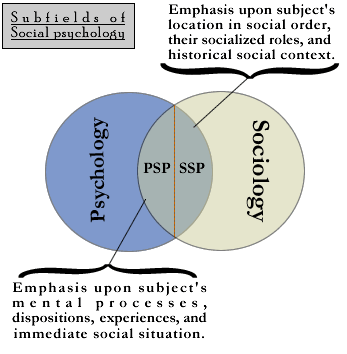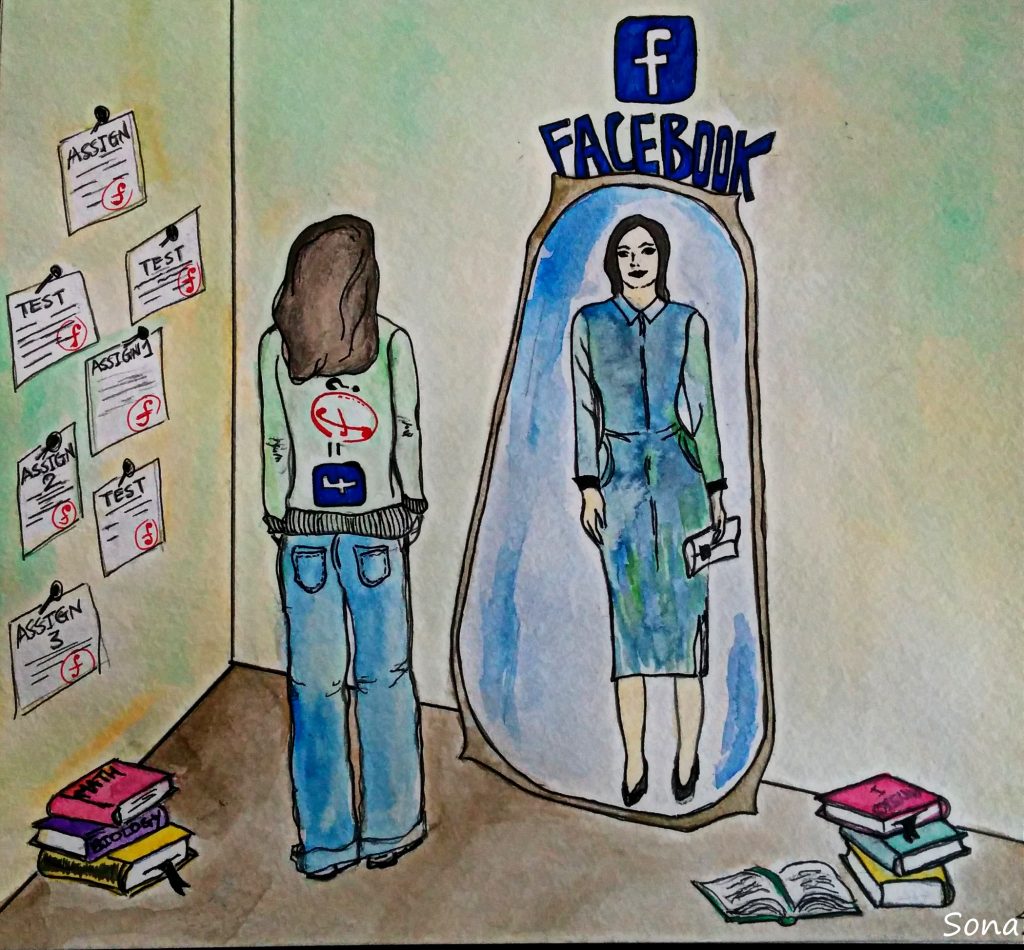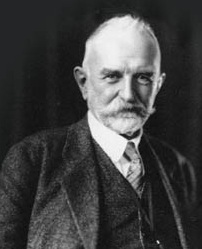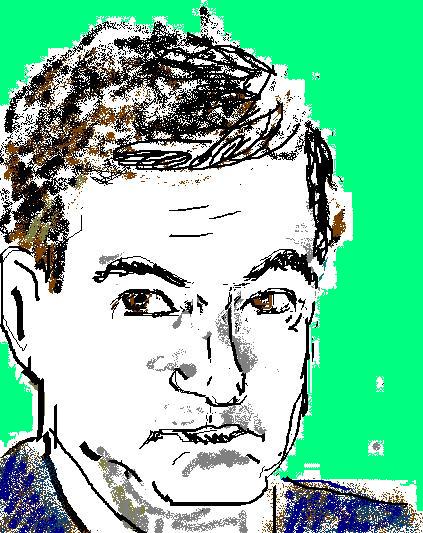5.1 Theories of Self Development

Learning Outcomes
By the end of this chapter, you’ll be able to:
- Describe what is meant by the self as a “social structure.”
- Compare different models of self-development.
- Explain Mead’s four stages of child socialization.
Introduction
Danielle’s case underlines an important point that sociologists make about socialization, namely that the human self does not emerge “naturally” as a process driven by biological mechanisms. What is a self? What does it mean to have a self?
The self refers to a person’s distinct sense of identity. It is who a person is for themselves and who they are for others. It has consistency and continuity through time, and an internal coherence that distinguishes people as unique persons. However, there is always something precarious and incomplete about the self. Selves change through the different stages of life. Sometimes they do not measure up to the ideals people hold for themselves or others, and sometimes they can be wounded by people’s interactions with others or thrown into crisis. It is not only what a person has done in their lives, but how they imagine themselves to be. Clearly, the self does not develop in the absence of socialization, the self is a social product.
Even when the self is alone for extended periods of time (hermits, prisoners in isolation, etc.), an internal conversation goes on that would not be possible if the individual had not been socialized already. The examples of feral children like Victor of Aveyron or children like Danielle who have been raised under conditions of extreme social deprivation attest to the difficulties these individuals confront when trying to develop this reflexive quality of humanity. They often cannot use language, form intimate relationships, or play games. Socialization is not simply the process through which people learn the norms and rules of a society; it is also the process by which people become aware of themselves as they interact with others. It is the process through which people are able to become people in the first place.
Theories of Self Development
When a person is born, they have a genetic makeup and biological traits. However, who they are as human beings develops through social interaction. Many scholars, in both psychology and sociology, have described the process of self development as a means of understanding how that “self” becomes socialized.
Making Connections: Sociological Concepts
Sociology or Psychology: What’s the Difference?

If sociologists and psychologists are both interested in people and their behaviour, how are these two disciplines different? What do they agree on, and where do their ideas diverge? The answers are complicated, but the distinction is important to scholars in both fields. While both disciplines are interested in human behaviour, psychologists are focused on how the mind influences that behaviour, while sociologists study the role of society in shaping both behaviour and the mind. Psychologists are interested in people’s mental development and how their minds process their world and influence their actions. Sociologists are more likely to focus on how different aspects of social life structure an individual’s relationship with the world. Another way to think of the difference is that psychologists tend to look inward at qualities of individuals’ internal life (mental health, emotional processes, cognitive processing), while sociologists tend to look outward to qualities of individuals’ social context (social institutions, cultural norms, interactions with others) to understand human behaviour.
As described in Chapter 1. An Introduction to Sociology, Émile Durkheim (1958–1917) was one of the first to emphasize this distinction in sociological research, when he attributed differences in suicide rates among people to social causes (degree of social integration) rather than to psychological causes (psychopathology, mental health) (Durkheim, 1897). This same approach applies today. For example, a sociologist studying how a couple gets to the point of their first kiss on a date might focus the research on cultural norms of dating, social patterns of romantic activity in history, or the influence of social background on romantic partner selection. How is this process different for seniors than for teens, for example? A psychologist would more likely be interested in the person’s romantic history, psychological type, or the mental processing of erotic desire. The point that sociologists like Durkheim would make is that an analysis of individuals at the psychological level cannot adequately account for social variability of behaviours. The difference in suicide rates of Catholics and Protestants, or the difference in dating scripts across cultures or historical periods, can not be explained at the level of individual psychology. Sometimes sociology and psychology can combine in interesting ways, however. Christopher Lasch’s The Culture of Narcissism (1979) argued that the neurotic personality was a product of an earlier Protestant ethic style of competitive capitalism; whereas, late post-industrial consumer capitalism is conducive to narcissistic personality structures (the “me” society). Theodore Adorno and his colleagues described the features of an authoritarian personality that was susceptible to the appeals of fascistic political formations (Adorno et al., 1950). More recently the “dark triad” personality traits — narcissism (entitled self-importance), Machiavellianism (strategic exploitation and deceit), and psychopathy (callousness and cynicism) — have been shown to predict white nationalist (“alt-right”) political beliefs and behaviours (Moss & O’Connor, 2020).
Charles Horton Cooley

One of the pioneering contributors to sociological perspectives on self-development was the American sociologist Charles Horton Cooley (1864–1929). Cooley asserted that people’s self understanding is constructed, in part, by their perception of how others view them — a process termed “the looking glass self” (Cooley, 1902). According to Cooley, people base their self-image on what they think other people see. People imagine or project how they must appear to others, then react to this speculation. They don certain clothes, prepare their hair in a particular manner, wear makeup, use cologne, and the like — all with the notion that their presentation of themselves is going to affect how others perceive them. They anticipate a certain reaction, and, if lucky, they get the one they desire and feel good about it. Cooley believed that the sense of self is not based on an internal source of individuality therefore. Rather, people imagine how they look to others, draw conclusions based on others’ reactions, and then develop their personal sense of self. In other words, other people’s reactions are like a mirror in which the self is reflected. People live a mirror image of themselves. As he put it, “The imaginations people have of one another are the solid facts of society” (Cooley, 1902). The self or “self idea” is thoroughly social. It is not an expression of the internal essence of the individual, or of the individual’s unique psychology which emerges as the individual matures. It is based on how people imagine they appear to others. It is not how the self actually appears to others, but the self’s projection of what others think or feel towards it. This projection defines how people feel about themselves and who they feel themselves to be. The development of a self, therefore, involves three elements in Cooley’s analysis: “the imagination of our appearance to the other person; the imagination of his judgement of that appearance, and some sort of self-feeling, such as pride or mortification” (Cooley, 1902).
George Herbert Mead

Later, George Herbert Mead (1863–1931) advanced a more detailed sociological approach to the self. He agreed that the self, as a person’s distinct identity, is only developed through social interaction: “[I]t is impossible to conceive of a self arising outside of social experience” (Mead, 1934). However, Mead broke the self down into two components or “phases,” the “I” and the “me.” The “me” represents the part of the self in which one recognizes the “organized sets of attitudes” of others toward the self. It is who we are in other’s eyes: our roles, our “personalities,” our public personas. The “I,” on the other hand, represents the part of the self that acts on its own initiative or responds to the organized attitudes of others. It is the novel, spontaneous, unpredictable part of the self: the part of the self that embodies the possibility of change or undetermined action. The self is always caught up in a social process in which one flips back and forth between two distinguishable phases, the I and the me, as one mediates between one’s own individual actions and individual responses to various social situations and the attitudes of the community. While the self is dependent on our interaction with others, we are not mere reflections of our social world. This flipping back and forth is the condition of our being able to be social.
How do we go from being newborns to being humans with “selves?” Mead believed that there is a specific path of development that all people go through. During the preparatory stage, children are only capable of imitation: they have no ability to imagine how others see things. They copy the actions of people with whom they regularly interact, such as their caregivers. This is followed by the play stage, during which children begin to take on the role that one other person might have. Thus, children might try on a parent’s point of view by acting out “grownup” behavior, like playing “dress up” and acting out the “mom” role, or talking on a toy telephone the way they see their father do.
During the game stage, children learn to consider several roles at the same time and how those roles interact with each other. They learn to understand interactions involving different people with a variety of purposes. For example, a child at this stage is likely to be aware of the different responsibilities of people in a restaurant who together make for a smooth dining experience (someone seats you, another takes your order, someone else cooks the food, while yet another clears away dirty dishes).
Finally, children develop, understand, and learn the idea of the generalized other, the common behavioral expectations of general society. By this stage of development, an individual is able to imagine how he or she is viewed by one or many others—and thus, from a sociological perspective, to have a “self” (Mead 1934).
Erving Goffman

Role performance is how a person expresses his or her role; describing it as a “performance” emphasizes that individuals use certain gestures, manners and “routines” to seek to influence others in their enactments of specific roles. In this sense, individuals in social contexts are always performers. The focus on the importance of role performance in everyday life led Erving Goffman (1922–1982) to develop a framework called dramaturgical analysis. It represents a sociological reflection on the famous line from Shakespeare’s As You Like It, “all the world’s a stage, and all the men and women merely players.”
Goffman recognized that people played their roles and engaged in interaction theatrically, often following common social scripts and using props and costumes to support their roles. For example, he notes that simply wearing a white lab coat brings to mind in the observer stock images of cleanliness, modernity, scrupulous exactitude and authoritative knowledge. In England in the 1950s, even chimney sweeps and perfume clerks wore white lab coats as props “to provide the client with the understanding that the delicate tasks performed by these persons [would] be performed in … a standardized, clinical confidential manner” (Goffman, 1959). Whether the perfume clerk was clinically competent or not, the lab coat was used to bolster the impression that he or she was. Today, even without the lab coats, an analogous repertoire of props, sets and scripts are used to convey the clean, clinical, and confidential tasks of the perfume clerk.
The audience of a performance is not passive, however. The audience also projects a definition of the situation through their responses to the performer. In general, the audience of a performance tries to attune their responses as much as possible so that open contradiction with each other or the performer does not emerge. The rules of tact dictate that the audience accommodates the performer’s claims and agrees to overlook minor flaws in the performance so that the encounter can reach its conclusion without mishap.
As everyone who has been in an awkward social situation knows, the stakes of mutual accommodation in social interactions are high. Events that contradict, discredit or throw doubt upon the performer threaten to disrupt the social encounter. When it happens, this results in a kind of micro-level anomie or normlessness, which is characterized by a general uncertainty about what is going to happen and is usually painful for everyone involved.
When these disruptive events occur, the interaction itself may come to a confused and embarrassed halt. Some of the assumptions upon which the responses of the participants had been predicated become untenable, and the participants find themselves lodged in an interaction for which the situation has been wrongly defined and is now no longer defined. At such moments the individual whose presentation has been discredited may feel ashamed while the others present may feel hostile, and all the participants may come to feel ill at ease, nonplussed, out of countenance, embarrassed, experiencing the kind of anomie that is generated when the minute social system of face-to-face interaction breaks down (Goffman, 1959).
Therefore, the logic of social situations, whatever their particular content or participants, dictates that it is in the interest of the performer to control the conduct and responses of the others through various defensive strategies or impression management, while it is in the interest of the audience to accommodate the performance as far as is practicable through various protective practices (e.g. tact, willful ignorance, etc.).
As a result, individuals are continually obliged to manage the impression they are making on the others, often using the same type of “props” and “lines” as an actor. Social interactions are governed by preventative practices employed to avoid embarrassments. Moreover, because it can be unclear what part a person may play in a given situation, he or she has to improvise his or her role as the situation unfolds. Each situation is a new scene, and individuals perform different roles depending on who is present. The emphasis in Goffman’s analysis, as in symbolic interactionism as a whole, is that the social encounter, and social reality itself, is open and unpredictable. It relies on a continuous process of mutual interpretation, of signs given and signs received. Social reality is not predetermined by structures, functions, roles, or history but often draws on these in the same way actors draw on background knowledge and experience in creating a credible character.
The implications of Goffman’s dramaturgical approach are that one is always playing a role–the self is never truly singular or authentic in Goffman’s view. The self is just a collection of roles that we play out for different people in different situations. Think about the way you behave around your coworkers versus the way you behave around your grandparents versus the way you behave with a blind date. Even if you’re not consciously trying to alter your personal performance, your grandparents, coworkers, and date probably see different sides of you. Back stage or front stage, the self is always an artifact of the ongoing stratagems of accommodation and impression management involved in the social interaction with particular persons. The self is on one side “an image pieced together from the expressive implications of the full flow of events in an undertaking,” and on the other, “a kind of player in a ritual game” (Goffman, 1972). The self is essentially a mask.
It is probably no mere historical accident that the word person, in its first meaning, is a mask. It is rather a recognition of the fact that everyone is always and everywhere, more or less consciously, playing a role… It is in these roles that we know each other; it is in these roles that we know ourselves (Park quoted in Goffman, 1959)
Goffman’s point here is not that individuals are completely inauthentic or phony. “In so far as this mask represents the conception, we have formed of ourselves—the role we are striving to live up to—this mask is our truer self, the self we would like to be” (Goffman, 1959).
The Socialization of Gender

How do girls and boys learn different gender roles? Gender differences in the ways boys and girls play and interact develop from a very early age, sometimes despite the efforts of parents to raise them in a gender neutral way. Little boys seem inevitably to enjoy running around playing with guns and projectiles, while little girls like to study the effects of different costumes on toy dolls. Peggy Orenstein (2012) describes how her two-year-old daughter happily wore her engineer outfit and took her Thomas the Tank Engine lunchbox to the first day of preschool. It only took one little boy to say to her that “girls don’t like trains!” for her to ditch Thomas and move on to more gender “appropriate” concerns like princesses. If gender preferences are not inborn or biologically hard-wired, how do sociologists explain them?
As the Thomas the Tank Engine example suggests, doing gender — performing tasks based upon the gender assigned by society — is learned through interaction with others in much the same way that Mead and Cooley described for socialization in general. Children learn how to do gender through direct feedback from others, particularly when they are censured for violating gender norms. Gender is in this sense a social performance and an accomplishment rather than an innate trait (West and Zimmerman, 1987). If a child successfully performs an activity like a boy or a girl “should,” they are accepted or rewarded, but if they fail, they are often corrected or get disapproving feedback. Doing gender therefore takes place through the child’s developing awareness of self through their interaction with others. In the Freudian model of gender development, children become aware of their own genitals, and spontaneously generate erotic fantasies and speculations whose resolution leads them to identify with their mother or father (Freud, 2000). Whereas in the sociological model, it is adults’ awareness of, and gendered interpretation of the meaning of, a child’s genitals that leads to gender labeling and reinforcement of gender roles (Bem, 1989; Cahill, 1986; Fagot et al., 1986).
Image Description
Figure 5.4
A venn diagram showing the overlap between psychology and sociology, which are described as the “subfields of social psychology.” The overlap area in the diagram represents the field of social psychology and is itself divided into two areas. The area representing the psychological side of social psychology is described in the diagram as follows: “emphasis upon subject’s mental processes, dispositions, experiences, and immediate social situation.” The area representing the sociological side of social psychology is described in the diagram as follows: “emphasis on subject’s location in social order, their socialized roles, and historical social context.”
Media Attributions
- Gollum © Brenda Clarke is licensed under a CC BY-NC-ND (Attribution NonCommercial NoDerivatives) license
- Social psychology division © lucidish is licensed under a CC BY-SA (Attribution ShareAlike) license
- Facebook: Self-constructed digital identity and academic performance © joelle L
- George Herbert Mead is licensed under a Public Domain license
- Erving Goffman © キヨンネ is licensed under a CC BY-SA (Attribution ShareAlike) license
- Cinderella Disney Princess © Mike Mozart is licensed under a CC BY (Attribution) license

